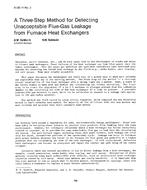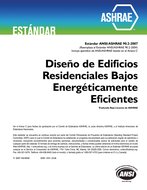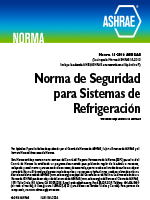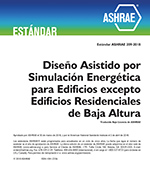Description
Corrosion, cyclic stresses, etc ., can in rare cases lead to the development of cracks and holes in furnace heat exchangers. These failures of the heat exchanger can leak flue gases into the indoor environment. Over the years gas utilities and appliance contractors have developed many methods for detecting the failed heat exchange in the field—e.g., smoke bombs, odor tracing, and salt sprays. None were totally acceptable.
This paper discusses the development and field test of a method that is much more reliable and repeatable than any of the existing methods. The first step of the method is a thorough visual examination of the heat exchanger with a strong light and a mirror. Next, a check of the burner flames is made with and without the circulating air blower operating. The final step is to trace the migration of a 14.3 % methane in nitrogen mixture from the combustion chamber to the circulating air side of the heat exchanger if a leak is present. A portable combustible gas detector is used, which can be calibrated to respond to a leakage rate equivalent to 200 ppm carbon monoxide.
The method was field tested by seven utility companies, which compared the new three-step method to their normally used method. The majority of the utilities felt the new method was more reliable and accurate than their currently used method.
Units: I-P
Citation: Symposium, ASHRAE Transactions, 1985, vol. 91, pt. 2B, Honolulu, HI
Product Details
- Published:
- 1985
- Number of Pages:
- 13
- File Size:
- 1 file , 960 KB
- Product Code(s):
- D-HI-85-14-2




